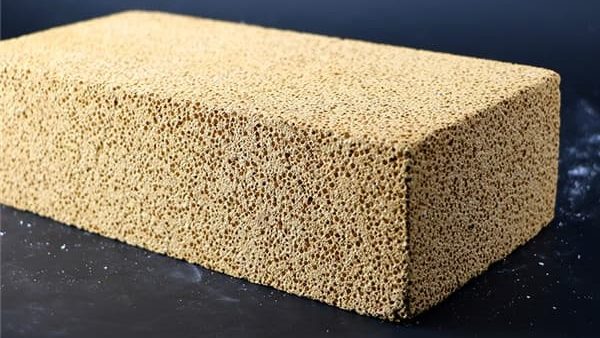INTRODUCTION
Dolomite is a calcium and magnesium double carbonate (CaCO3, MgCO3). It is a key raw material in the iron and steel, ferroalloys, glass, alloy steels, and fertilizer industries, among other industries. There are also dolomite chip flooring tiles accessible. Dolomite brick has a number of characteristics that make it an excellent refractory lining for a cement rotary kiln. The strong refractoriness of dolomite bricks allows them to withstand the high temperatures and stresses of the burning zone, as well as alkali and decreasing environment corrosion resistance and excellent coat ability.

Ultimately, the environmental protection of the materials utilized is one of the dolomite brick’s best features. Dolomite is a type of limestone that is high in magnesium (CaMgCO3). It can be found in nature. With the use of silicate binders and wax, calcined dolomite brick particles are joined. The mixture is then molded into bricks, which are subsequently air dried and charred for roughly a day at temperatures ranging from 1200 to 1560°C to produce stabilized dolomite bricks. Basic slag doesn’t seem to bother these bricks.
Dolomite refractory
Properties:
- Dolomite bricks are porous, softer, and have a lower strength than magnesia bricks.
- They can withstand temperatures of up to 2300 ℃ without pressure as well as up to 1650 ℃ with pressure.
The most essential aspect of a basic brick is its coating formation. In practice, if the kiln conditions are favorable, a coating will form. The most significant distinction between the various sorts of bricks used in this situation is how well they will cling onto coating once it has been produced. During the campaign, the clinker coating on the refractory lining is not always present. Thermal stress may be the reason of some or all coating degradation. When the lining’s covering is destabilized, the brick beneath it is exposed to a rapid temperature fluctuation, exposing the brick to serious thermal shock. Standard dolomite was limited for a long time to the region where a stable coating formed over the refractory lining, and blackouts were few. The creation of zirconia enhanced grades, on the other hand, has greatly improved the thermal shock resistance of dolomite bricks. Since zirconia is relatively non-reactive with dolomite, it was selected.
Zirconia is corrosion resistant to clinker minerals present in cement kilns and has a high refractoriness. As a result, the zirconia-enriched dolomite grades exhibit outstanding thermal flexibility and thermal shock resistance. Finally, chemical reaction resistance is the most significant need for a refractory lining material used during burning zone of a cement rotary kiln, which is the zone with the maximum temperatures.
Dolomite bricks are the top pick for these situations. At a temperature of about 1450° C, the melting phases of the clinker react with the lime in the refractory brick material to generate the minerals alite and belite, which have very high melting temperatures (2000 and 2130° C). A firm and steady coating forms on the surface of the dolomite bricks as a result of this reaction. The creation of the coating will lessen the wear on the brick surface. Furthermore, the coating protects the clinker burden in the kiln from temperature losses, resulting in decreased heat losses through the shell. Thermal losses will be drastically decreased, specifically in the hottest area, the burning area. As a result, dolomite bricks are the best choice for the cement rotary kiln’s burning zone.